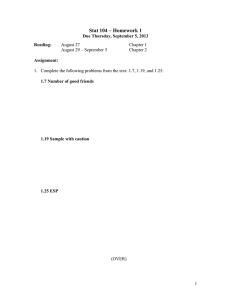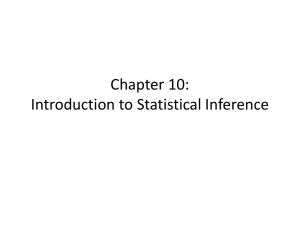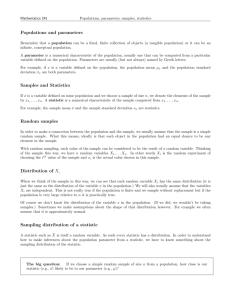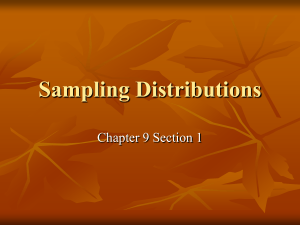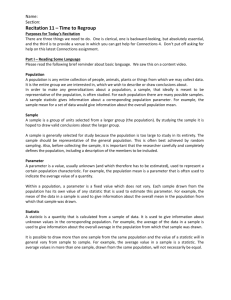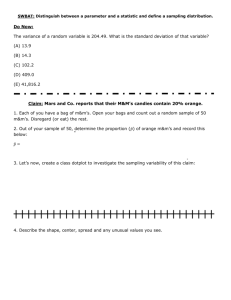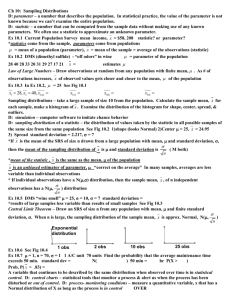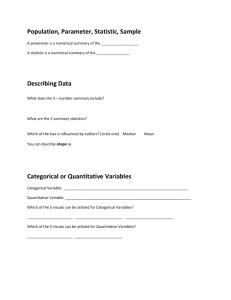Intro to Sampling Distributions (Word Document)
advertisement
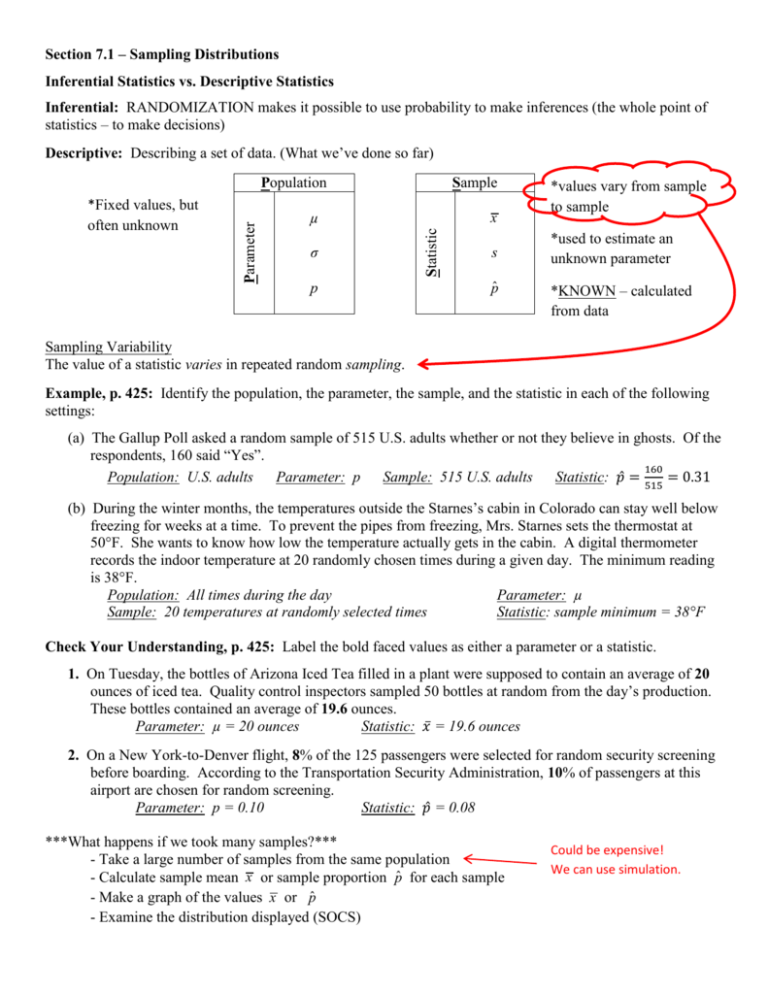
Section 7.1 – Sampling Distributions Inferential Statistics vs. Descriptive Statistics Inferential: RANDOMIZATION makes it possible to use probability to make inferences (the whole point of statistics – to make decisions) Descriptive: Describing a set of data. (What we’ve done so far) Sample µ σ p x Statistic *Fixed values, but often unknown Parameter Population s p̂ *values vary from sample to sample *used to estimate an unknown parameter *KNOWN – calculated from data Sampling Variability The value of a statistic varies in repeated random sampling. Example, p. 425: Identify the population, the parameter, the sample, and the statistic in each of the following settings: (a) The Gallup Poll asked a random sample of 515 U.S. adults whether or not they believe in ghosts. Of the respondents, 160 said “Yes”. 160 Population: U.S. adults Parameter: p Sample: 515 U.S. adults Statistic: 𝑝̂ = 515 = 0.31 (b) During the winter months, the temperatures outside the Starnes’s cabin in Colorado can stay well below freezing for weeks at a time. To prevent the pipes from freezing, Mrs. Starnes sets the thermostat at 50°F. She wants to know how low the temperature actually gets in the cabin. A digital thermometer records the indoor temperature at 20 randomly chosen times during a given day. The minimum reading is 38°F. Population: All times during the day Parameter: µ Sample: 20 temperatures at randomly selected times Statistic: sample minimum = 38°F Check Your Understanding, p. 425: Label the bold faced values as either a parameter or a statistic. 1. On Tuesday, the bottles of Arizona Iced Tea filled in a plant were supposed to contain an average of 20 ounces of iced tea. Quality control inspectors sampled 50 bottles at random from the day’s production. These bottles contained an average of 19.6 ounces. Parameter: µ = 20 ounces Statistic: 𝑥̅ = 19.6 ounces 2. On a New York-to-Denver flight, 8% of the 125 passengers were selected for random security screening before boarding. According to the Transportation Security Administration, 10% of passengers at this airport are chosen for random screening. Parameter: p = 0.10 Statistic: 𝑝̂ = 0.08 ***What happens if we took many samples?*** - Take a large number of samples from the same population - Calculate sample mean x or sample proportion p̂ for each sample - Make a graph of the values x or p̂ - Examine the distribution displayed (SOCS) Could be expensive! We can use simulation. Example: Everyone in class will use their calculator to find a random sample of 10 numbers between 1 - 10. # 𝑜𝑓 3′𝑠 𝑜𝑟 𝑏𝑒𝑙𝑜𝑤 Count how many are less than or equal to 3. Find the proportion that are 3 or below = . Collect 10 every student’s proportion and create a histogram. Then, describe the histogram. Below is an example: N = 50 trials 𝑝̂ 0 0.1 0.2 0.3 0.4 0.5 0.6 Count 3 9 14 10 9 3 2 Shape: Roughly symmetrical Outliers: No apparent outliers Center: Between 0.2 and 0.3 Spread: 0 to 0.6
